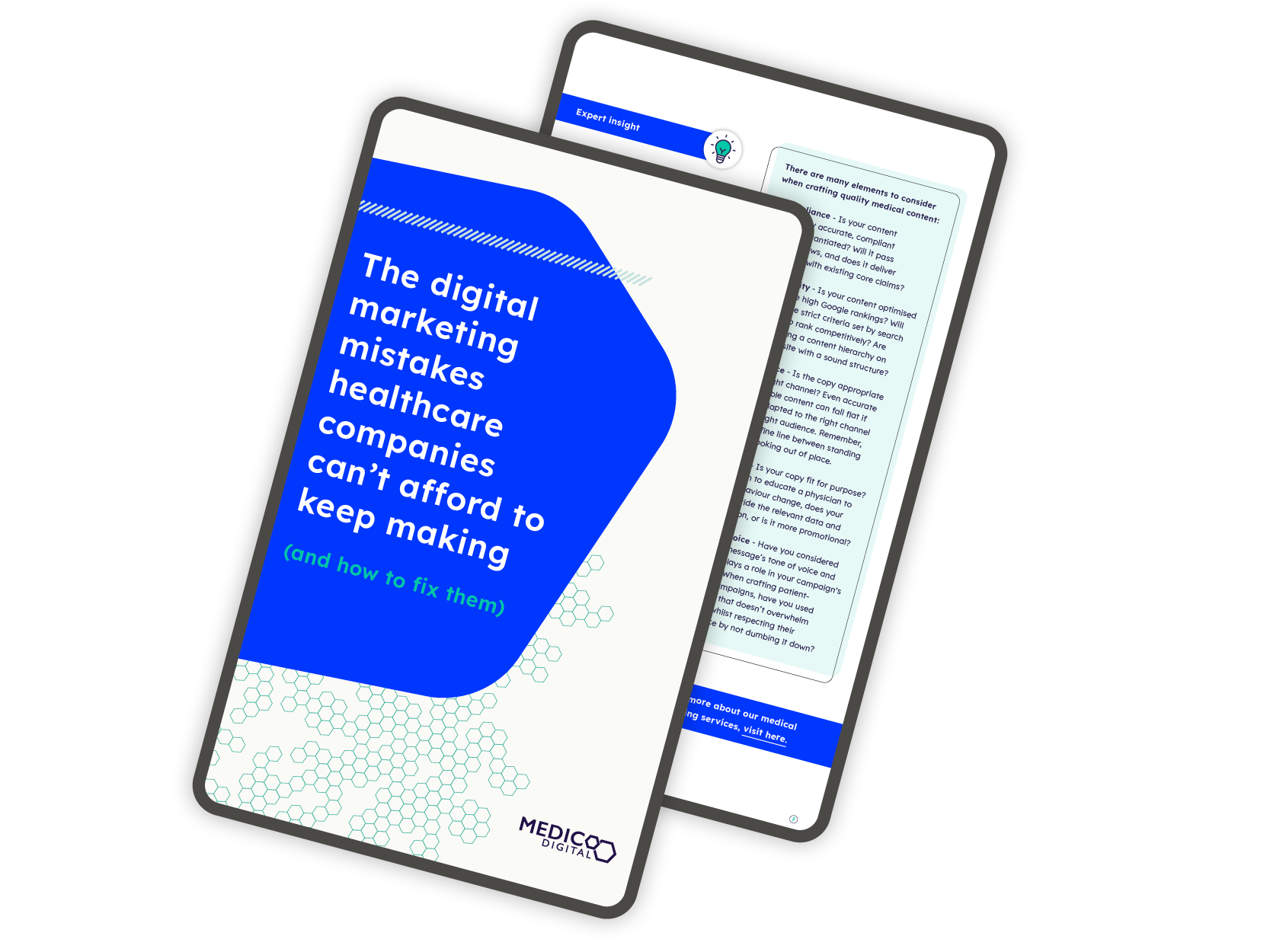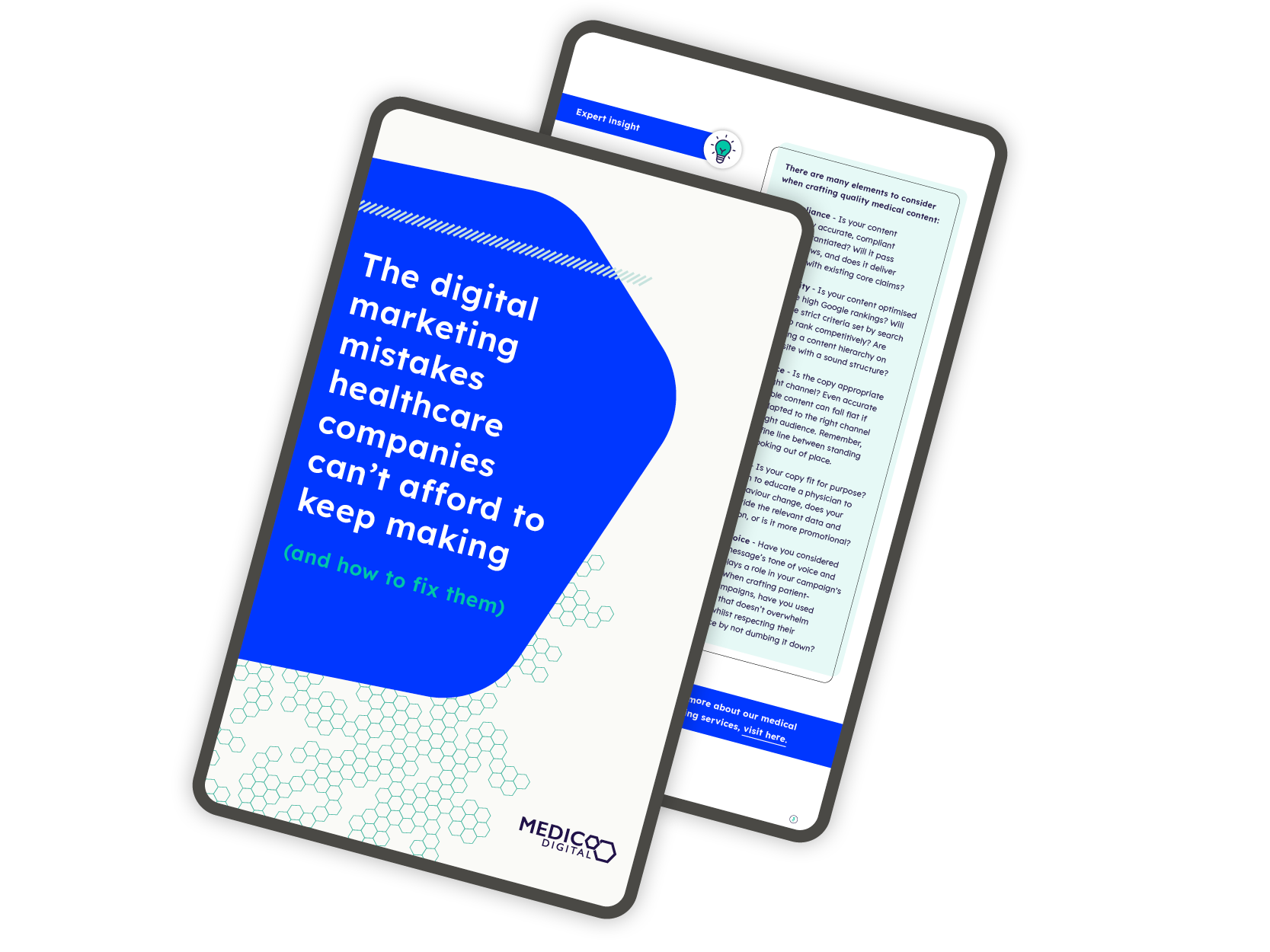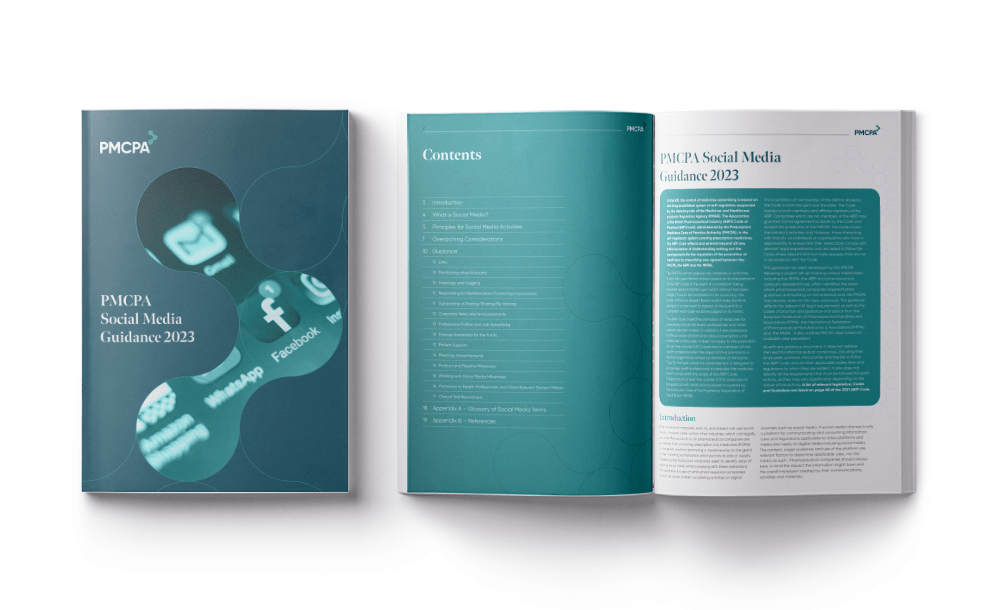The 2023 guidance doesn’t offer a wealth of new information, but instead doubles down on the safe and cautious approach all relevant bodies would like to see pharmaceutical companies take with respect to social media. While much is discussed about the restrictive nature of these guidelines, we continue to see huge opportunity in the patient education space and would encourage others in the conscious pursuit of better healthcare communication that’s beneficial for pharma, HCPs and most importantly patients.
Earlier this year the PMCPA (Prescription Medicines Code of Practice Authority) released new social media guidance for the pharmaceutical industry to help give some clarity on what has historically been a very grey area (for anyone that’s still confused, check out our guide to the EU MDR laws here). The guidance has been designed to give more clarity on how social media can be utilised as a platform in the industry, and to ensure that any promotion of prescription medicine complies with the Association of the British Pharmaceutical Industry’s (ABPI) Code of Practice.
This guidance comes in response to the rapidly changing landscape of social media and the need for the pharmaceutical industry to keep up with the latest innovations whilst ensuring they are not in breach of the ABPI code. The document provides a foundation for companies to use to ensure that they are communicating with patients and healthcare professionals responsibly in an informative and transparent way that does not directly promote prescription medicines to the public. Although the guidance does not offer explicitly granular advice, due to the nature of the PMCPA taking a case by case approach, it does align with EFPIA and IFPMA’s published guidelines on social media and digital channels and is very much welcomed in the industry.
Below is a summary of some of the key principles from the document for you to digest.

Transparency in pharmaceutical social media marketing
One of the key principles in the document is the need for transparency and that pharmaceutical companies should always be transparent in all aspects of their communication. All content posted on social media, including from third parties, should clearly define that company’s involvement. This is particularly important when companies decide to work with social media influencers, any relationship must be clearly stated from the outset and in certain cases the company may be liable for the content posted by the influencer.
Marketing pharmaceuticals on social media responsibly
Not only is transparency crucial, it is also important pharmaceutical companies take responsibility for any social media activity carried out by a third party or an employee/affiliate. If for example content is posted, shared or ‘liked’ by a UK company and its employees or any activity promoted by affiliates, it comes under the scope of the UK code.
Use of Social media for Adverse Events and Pharmacovigilance
Another area of focus for the guidance is the handling of adverse event reporting and pharmacovigilance. It notes that companies should ensure social media platform monitoring is in place and that it is made clear to users where they can report adverse events.
Pharma Product References and Pipeline on Social Media
Unsurprisingly, the guidance reinforces the explicit prohibition of the promotion of prescription-only medicines (POMs) to the public and reflects EFPIA’s guidance that any mention of POMs is likely to be considered a promotion. The document also highlights that even if a product is promoted on social media without being named but references its indication, this is seen to be presumptively promotional and could be in breach of the ABPI code.
Significantly, it is recognised that companies are often turning to social media to attract the corporate community and share product pipelines. In this instance the guidance gives safeguards to consider when companies are looking to share press releases which may include unlicensed medicine, and even gives this example:
‘An informative statement shared via a corporate public LinkedIn account which is linked to a press release within the media section on the corporate website about recently published results for an unlicensed medicine. The statement on LinkedIn should not mention product name or study name, but should clearly signpost the intended audience, for example, ‘For Investors’ or ‘For Medical Media’ and might state ‘new press release regarding recently published data in Oncology is available on our website [link to media section of corporate website].’
Pharmaceuticals use of social media for Patient engagement
As social media is now regularly being used as a channel to engage with patients, the guidance recognises that companies can use it as a platform to share non-promotional information, with the aim of increasing disease awareness and educating patients, parents or caregivers. The document also mentions the use of platforms such as YouTube, which can be used to host POM informational videos so long as they are hosted on secured, non-public URLs and the audience is clearly identified and content is appropriate.
Pharma links, hashtags and tagging on social media
These topics tie in closely with the importance of transparency. The guidance explains that companies should be cautious when using links as they are responsible for any content shared, meaning the content should be checked and approved to ensure it’s appropriate. Tagging and hashtags add yet another layer of risk as, although they can help users navigate topics, they may inadvertently lead to product claims and a breach of the ABPI code.
To summarise, the use of social media does raise particular challenges for the industry as it’s difficult to guarantee the intended audience and all communication is subject to the traditional forms of UK advertising regulations and the ABPI code. However, this new guidance does shed light on many aspects of social media usage and is a very welcomed document. As ever, it’s critical companies adhere to local guidelines and provide training to its employees on the use of social media. Creating your own company guidelines helps employees manage the ever changing landscape of social media and digital marketing.
For more information on pharmaceutical marketing, give us a call today to chat further. Additionally, you might find these posts interesting:




 Download for FREE
Download for FREE 

